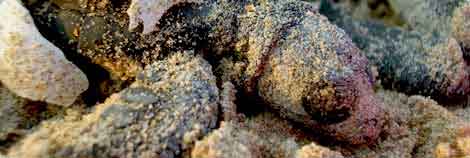Leatherbacks

The Leatherback Sea Turtle is thought to be one of the most endangered sea turtles and one of the biggest marine turtles in the world. It dives deeper (up to 4,265 feet) than any other sea turtle, is the most migratory and wide ranging of all sea turtles, and has existed on Earth for more than 110 million years. It was alive when mammoths and tyrannosauruses walked the earth.
Their populations may have declined as much as 99% over the past 25 years. Many believe the Pacific leatherback sea turtle could become extinct within 5-15 years if measures are not taken immediately to prevent threats to their existence.

15 years ago almost 1,500 leatherbacks nested at Playa Grande, Costa Rica. Last year only 52 came ashore. At Playa Camaronal in the Camaronal National Wildlife Refuge over 2,500 leatherback sea turtles came ashore in November of last year to lay their eggs. This is the first time in 15 years that more than a few of these magnificent creatures have returned to Camaronal for nesting.
Leatherbacks today measure 4 - 8 feet in length and weigh 500 to 1,200 pounds. The largest recorded sea turtle was a male Leatherback found along the coast of Wales in 1988. It was 9.5 feet long and weighed almost 2,000 pounds.
Nomadic, they travel the World’s tropical and subtropical oceans searching for their favorite foods, mostly poisonous jellyfish, but also sea urchins, squid, crustaceans, tunicates, fish, blue-green algae, and floating seaweed.
Leatherbacks’ shells are made of many small bones covered by a hard, rubbery skin with seven ridges (keels) running the length of the shell. Their skin is mostly black with some lighter colored spotting and a pink spot on the dorsal surface of the head in adults. The paddle limbs of the leatherback are black with white margins and light spotting. Babies are mostly black with white along the edge of the flippers and keels on the shell.
They come ashore to lay their eggs on dark, undeveloped beaches from November to April in Costa Rica. This is the only time they leave the water. Females nest about 5-7 times during a nesting season, with the most ever recorded being 11 nests. The time between nesting during one season is 9-10 days. Nests are built at night in clutches of 70-80 eggs.
Eggs are about 2 inches in diameter and take about 55-75 days to hatch. The gender of the eggs is determined by temperature during incubation. Temperatures of 30°C (86F) and higher usually are female, and 27°C or lower (80F)) are usually male.
Babies usually emerge from their shells at night. Most leatherbacks return to their nesting beaches at 2-3 year intervals. Sexual maturity is about 6-10 years of age.
Distribution is worldwide in tropical and subtropical waters of the Atlantic, Pacific, and Indian Oceans with sightings as far north as Newfoundland and as far south as Australia and Argentina.
Estimates of global nesting populations indicate 26,000 to 43,000 nesting females each year. This is a dramatic decline from the estimated 115,000 in 1980. There has been a marked decrease in nesting in the last 20 years on the Pacific coasts of Mexico and Costa Rica Populations in Mexico which at one time were the world’s highest with 65% of worldwide population, are now less than 1% of their estimated numbers in 1980.
The largest population of nesting leatherbacks in the World now occurs in the western Atlantic in French Guiana where 4,500-7,500 females nest per year. Columbia estimates several thousand nests per year and West Papua in the western Pacific and Indonesia have about 600-650 nesting females per year. Some nesting occurs in the Unites States; but only in small numbers. 35 per year on the Florida east coast, 50-100 per year in the U.S. Virgin Islands, and 30-90 per year in Puerto Rico.
Decline in populations is believed to be caused by exploitation by humans for eggs and meat, incidental takes in numerous commercial fisheries of the Pacific such as the shrimp trawling and longline fisheries, and choking by ingestion of plastic bags which look like jellyfish to the sea turtle. Development has played a part, as well, with artificial lighting along previous nesting beaches discouraging leatherbacks from returning to places they once appeared in the thousands.
Beginning in 1998, the Fish and Wildlife Service of the United States have provided annual funds to assist in recovery efforts for Leatherbacks in Mexico and Costa Rica. Projects have included surveys of nesting sites, research of technologies to minimize interaction with sea turtles in the longline fisheries, and acquirement of important nesting locations for long-term protection.

